Are you wondering what happens when your car gets a dent? Whether it’s from a minor parking lot mishap or a more significant collision, understanding the repair costs is crucial before making any decisions.
As a car owner, you’ve likely faced the frustration of discovering a new dent. The cost of repair can vary widely depending on several factors, including the type of dent repair needed and the overall cost associated with it.
This guide will walk you through the different aspects of dent repair cost, helping you make informed decisions about your car‘s maintenance.
Key Takeaways
- Understanding the factors that influence dent repair costs.
- Overview of traditional vs. paintless repair methods.
- How vehicle type, dent location, and damage severity affect costs.
- The importance of assessing repair options before deciding.
- What to expect from the dent repair process.
Understanding Car Dent Damage
Understanding the intricacies of car dent damage is crucial for vehicle owners to make informed decisions about repairs. Car dent damage can significantly affect your vehicle’s appearance and value.
Common Causes of Car Dents
Various incidents can lead to dent formation on your vehicle. Common causes include parking lot incidents, minor collisions, hailstorms, and falling objects such as branches or debris. These events can result in a range of dent types and sizes.
The impact type and force determine the resulting damage. For instance, a low-speed collision might cause a large, shallow dent, while a falling object could create a smaller, deeper one.
Types of Dent Damage
Dents come in various forms, including creases, round dents, sharp dents, and multiple dent patterns. The type and severity of damage influence the repair method and cost. For example, creases require specialized techniques, while round dents might be addressed with paintless dent repair.
The presence of paint damage alongside the dent can further complicate the repair process, potentially increasing costs. Understanding these factors helps you better assess the severity of the damage and potential repair expenses.
How Much Does It Cost to Fix Dent in Car?
The cost of fixing a dent in your car can vary widely based on several factors. Understanding these factors is essential to estimate the repair cost accurately.
Average Cost Range for Dent Repairs
The average cost for dent repair is between $125 and $500+. However, the actual cost can be higher or lower, depending on the repair process, the type of car you drive, and other factors. Minor dent damage, typically smaller than a quarter, can be fixed quickly and easily, with costs ranging from $50 to $200.
Cost Breakdown by Dent Size
Dent size plays a significant role in determining the repair cost. Here’s a breakdown of the costs associated with different dent sizes:
Small Dents ($50-$200)
Small dents are usually less than a quarter in size and can often be repaired without the need for a technician. The cost for such repairs is generally between $50 and $200, depending on the location and technique used.
Moderate Dents ($200-$500)
Moderate dents are typically between 1-2 inches in size and may require additional work, including potentially replacing panels. The cost for repairing moderate dents can range from $200 to $500.
Large Dents ($500-$2,500+)
Large dents are more extensive and may require significant repair work, including panel replacement and repainting. The cost for such repairs can be substantially higher, ranging from $500 to $2,500 or more, depending on the severity and location of the dent.
Regional Price Variations
Regional differences can also impact the cost of dent repair. Urban areas tend to have higher labor rates and shop overhead costs compared to rural locations, which can result in higher repair costs. Additionally, the level of competition among repair shops in a given area can influence pricing, with more competitive markets often leading to lower prices.
Understanding these factors can help you estimate the cost of dent repair more accurately and make informed decisions about where and how to have your car repaired.
Traditional Dent Repair Methods
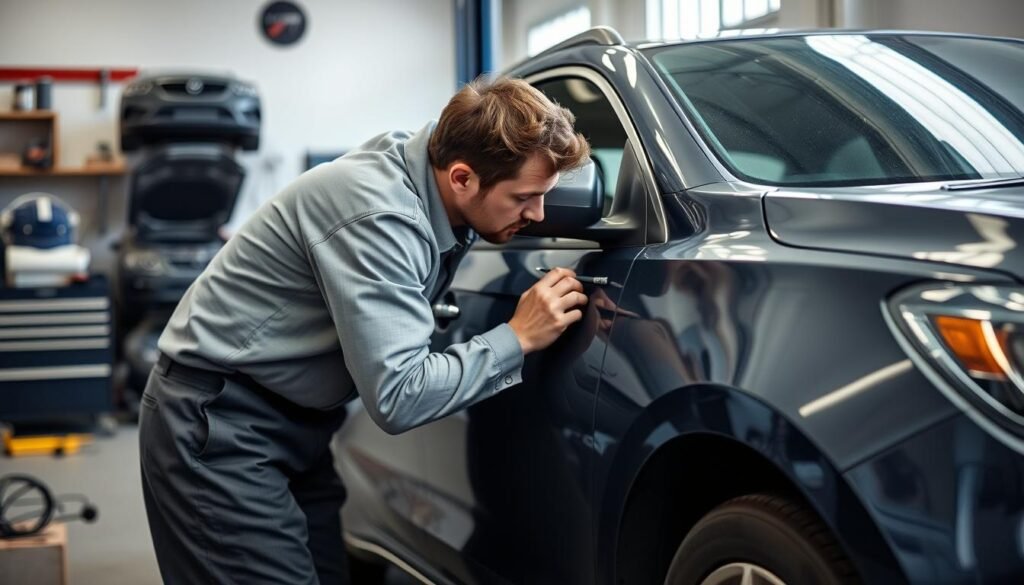
The traditional dent repair process involves a combination of skilled labor and specialized techniques to restore your car’s original appearance. This method is particularly effective for dents that are severe or located on complex panel areas.
The Traditional Repair Process
Traditional dent removal involves pounding the dent out of the car’s external body to a degree that’s workable, and then sanding down the area. With meticulous skill, layers of bonding material are applied to reshape the dented area to replicate the original form. After sanding, paint is then applied to match the rest of the body.
The process begins with a thorough assessment of the damage by a technician, who will determine the best approach for the repair. This includes evaluating the size, location, and depth of the dent, as well as any paint damage.
Technicians use a variety of tools and materials during the traditional repair process, including body fillers, sanding equipment, and paint matching technology. The goal is to restore the vehicle’s body to its original condition, ensuring a seamless blend with the surrounding areas.
When Traditional Repair Is Necessary
Traditional repair methods are necessary when the dent is severe or has resulted in paint damage. In such cases, simply pushing out the dent is not enough; the area needs to be filled, sanded, and repainted to match the rest of the vehicle.
Additionally, traditional repair is often the best choice for dents located on complex panel areas or those that have creased the metal. It’s also the preferred method when the dent is large or has damaged the vehicle’s bodywork.
Consulting a local collision repair shop can help you determine if traditional repair is the best option for your car. They can assess the damage and provide a recommendation based on the extent of the dent and the overall condition of your vehicle.
Paintless Dent Repair (PDR) Explained
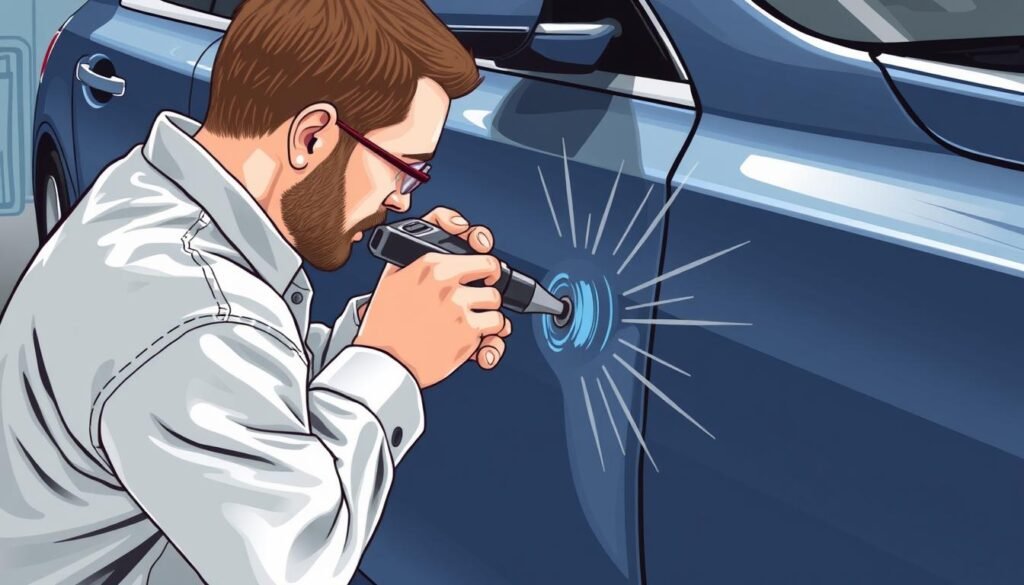
The Paintless Dent Repair process is a sophisticated method that removes dents from vehicles without affecting the original paintwork. This technique has gained popularity due to its efficiency and cost-effectiveness.
How PDR Works
Paintless Dent Repair involves a meticulous process where a skilled technician uses specialized tools to reshape the metal back to its original form. First, the technician assesses the damage, carefully examining the shape, size, and position of the dent. To access the dent, they may need to remove certain accessories or panels. Then, using specific tools like metal rods and light boards, they apply pressure to push the metal back into place without damaging the paint.
Benefits of Paintless Dent Repair
Paintless Dent Repair offers several advantages over traditional dent repair methods. It is generally faster and more cost-effective, as it eliminates the need for painting and repainting. Moreover, PDR preserves the vehicle’s original factory paint, maintaining its resale value. This method is also environmentally friendly, reducing the need for chemicals and paints.
By choosing PDR, you can enjoy a quicker turnaround time and lower costs compared to traditional repair methods. Additionally, the preservation of the original paintwork ensures that your vehicle retains its original finish.
Limitations of PDR
While Paintless Dent Repair is a highly effective method, it is not suitable for all types of dent damage. It works best when the paint is intact and the metal has not been severely stretched or warped. Dents with scratches, scrapes, or chipped paint may require traditional repair methods. The feasibility of PDR also depends on the accessibility of the dented panel and the elasticity of the metal.
Key Factors That Influence Dent Repair Costs
The total cost of dent repair is determined by a complex interplay of various factors. When you consider getting your car’s dent fixed, understanding these factors can help you anticipate the costs involved.
Dent Size and Depth
The size and depth of the dent are crucial in determining the repair cost. Larger and deeper dents require more time and effort to repair, thus increasing the cost. For instance, a small, shallow dent might be fixed using paintless dent repair (PDR) techniques, which are generally less expensive. In contrast, larger dents may need more extensive work, including filling and repainting, which can drive up the costs.
Location on the Vehicle
The location of the dent on your vehicle also plays a significant role in determining the repair cost. Dents in hard-to-reach areas or those that are located on complex body panels can be more challenging to repair, thereby increasing the labor costs. For example, dents near the edge of a panel or on curved surfaces can be particularly troublesome.
Paint Damage Considerations
If the dent has damaged the paint, additional costs will be incurred for repainting the affected area. The cost of paint and the labor involved in matching the original color can significantly add to the overall expense. In cases where the paint is badly damaged, it might be necessary to repaint the entire panel to ensure a seamless finish.
Vehicle Make and Model
The make and model of your vehicle can also influence the dent repair cost. Luxury and exotic cars often require specialized repair techniques and materials, which can be more expensive. Additionally, some car models have body panels made from materials like aluminum, which can be costlier to repair than traditional steel.
Panel Material (Steel vs. Aluminum)
The material of the car’s body panels is another critical factor. Aluminum panels, commonly found in many modern vehicles, are generally more expensive to repair than steel panels due to the specialized tools and techniques required. The complexity of working with aluminum, including the need for specific welding techniques, contributes to the higher cost.
Understanding these factors can help you better estimate the costs associated with dent repair and make informed decisions about how to proceed with repairs.
Professional vs. DIY Dent Repair
You can either opt for professional dent repair services or try to fix the dent yourself using various DIY techniques. The choice between these two approaches depends on several factors, including the size and location of the dent, your budget, and your level of comfort with DIY repairs.
DIY Dent Repair Options
DIY dent repair kits are available in the market, ranging from simple dent pullers costing around $4 to comprehensive PDR kits that can cost up to $800. On average, a versatile kit with multiple tools can be purchased for around $50. Some popular DIY methods include using suction tools, dry ice, hairdryers, and plungers to remove dents.
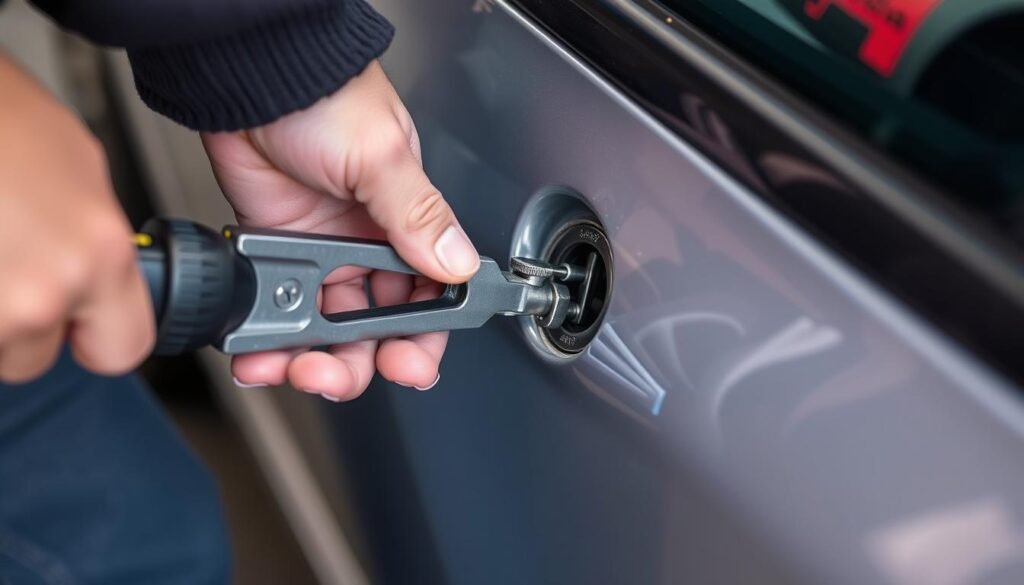
These kits can be effective for minor dents, but may not work well for larger or more complex damage. Additionally, there’s a risk of damaging the paint or stretching the metal if not done correctly.
Risks of DIY Repairs
Attempting DIY dent repairs can lead to several risks, including paint damage and metal stretching. If the repair is not done correctly, it may worsen the damage, requiring professional intervention and additional cost. In some cases, DIY measures can also void your vehicle’s warranty or insurance coverage.
When to Choose Professional Repair
If you’re unsure about your ability to repair the dent yourself or if the damage is extensive, it’s recommended to seek professional help. Professional dent repair services have the necessary tools and expertise to fix dents efficiently and effectively, ensuring a high-quality finish. Moreover, professionals can assess the damage and provide guidance on whether the repair is covered by your warranty or insurance.
The Professional Dent Repair Process
The professional dent repair process is a meticulous and multi-step procedure designed to restore your vehicle to its original condition. When you take your car to a reputable auto repair shop, you can expect a thorough and transparent process.
Assessment and Estimation
The first step in the professional dent repair process is a detailed assessment of the damage. Auto technicians start by cleaning the surface to get a clear view of the dent. They then evaluate the dent’s size, depth, and location to determine the most appropriate repair method. This assessment also helps in creating an accurate cost estimate for the repairs. In some cases, it might be more cost-effective to replace the damaged part rather than repairing it.
Repair Techniques Used by Professionals
Professional auto technicians use various techniques to repair dents, depending on the nature and extent of the damage. These techniques include Paintless Dent Repair (PDR), where technicians use special tools to gently push out the dent from the backside of the panel without damaging the paint. Other methods involve using a stud welder to pull out the dent, a dent puller with a large suction cup to pull out the dent, or a dolly and hammer to hammer out the dent. The choice of technique depends on the dent’s size, location, and the type of damage.
Typical Timeframes for Repairs
The time required for dent repairs varies significantly based on the repair method and the complexity of the damage. Simple PDR repairs can often be completed within a few hours, while more complex repairs involving metalworking or panel replacement may take longer, sometimes requiring multiple days. Reputable repair shops strive to complete repairs efficiently while maintaining high-quality standards.
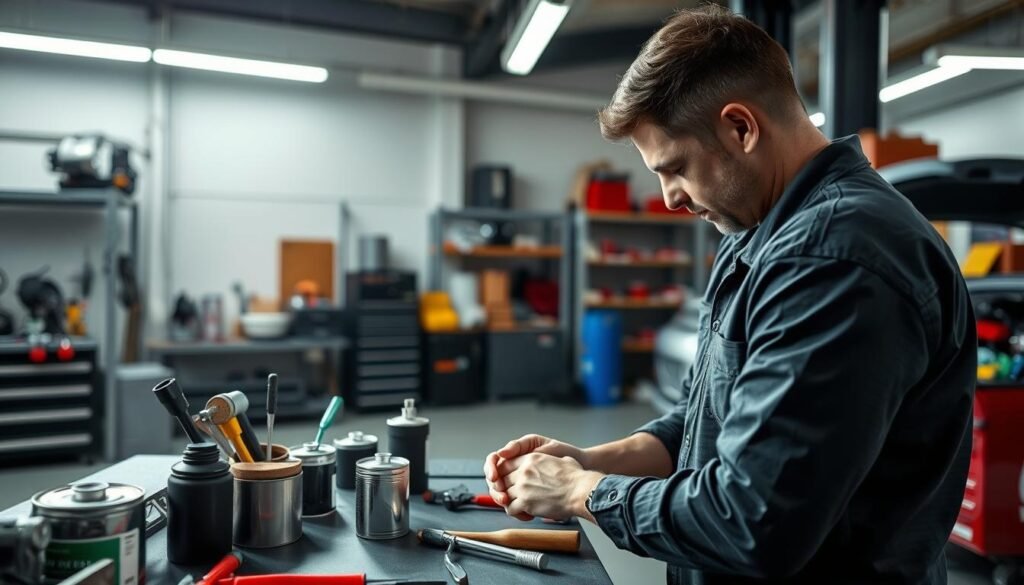
Hail Damage Repair Costs

Hail damage repair costs can be a significant concern for vehicle owners, and several factors influence the final bill for repairs. Unlike single dent repairs, hail damage often involves multiple dents across various panels of the vehicle, complicating the repair process and cost estimation.
Assessing Hail Damage Severity
The severity of hail damage is typically assessed based on the number of dents, their size, and their distribution across the vehicle. Repair shops often classify hail damage from minor to severe, with pricing adjusted accordingly. A minor hail damage might involve a few small dents, while severe damage could cover multiple panels with numerous large dents.
Multiple Dent Pricing Considerations
Repairing multiple dents from hail damage is priced differently than fixing a single dent. Some shops use a “per panel” pricing model, while others charge “per dent.” The total cost can be influenced by the ease of access to the damaged areas, the type of paint, and whether the dents are on flat or curved surfaces.
Insurance Coverage for Hail Damage
Insurance companies usually cover hail damage under comprehensive coverage. However, the extent of the coverage and the deductible can vary. Some insurance providers may have specific procedures for handling hail damage claims, including the use of specialized repair facilities that offer competitive pricing.
Insurance and Dent Repairs
Insurance plays a significant role in covering dent repairs, but the extent of the coverage varies depending on your policy and the circumstances surrounding the damage.
Will Insurance Cover Dent Repair?
Auto insurance policies typically handle dent repairs differently based on the type of coverage you have. Comprehensive insurance usually covers dent repairs resulting from incidents like hail, falling objects, or vandalism. On the other hand, collision coverage applies when the dent is a result of an accident. It’s essential to review your policy to understand what is covered.
Comprehensive Coverage: This type of insurance covers damages not resulting from an accident, such as hail or vandalism.
Collision Coverage: This covers damages to your vehicle resulting from an accident, regardless of who is at fault.
Filing a Claim vs. Paying Out of Pocket
Deciding whether to file an insurance claim or pay out of pocket for dent repairs depends on several factors, including the cost of the repair and your deductible. If the repair cost is less than your deductible, it might be more economical to pay out of pocket to avoid potential increases in your insurance premiums.
| Repair Cost | Deductible | Best Choice |
|---|---|---|
| $500 | $1,000 | Pay Out of Pocket |
| $1,500 | $1,000 | File a Claim |
How Repairs Affect Insurance Premiums
Filing a claim for dent repairs can potentially increase your insurance premiums, especially if you have had multiple claims in the past. However, if you have a claim-free history, the impact might be minimal. It’s also worth noting that some insurance providers offer claim-free discounts, which could be affected if you file a claim.
Choosing the Right Dent Repair Shop
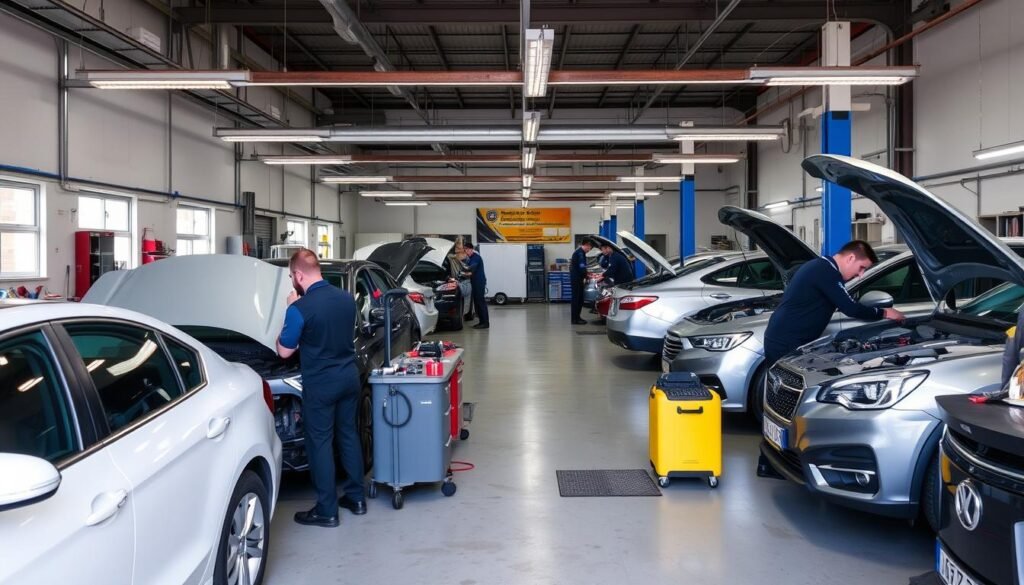
Selecting the best dent repair shop near you requires some research and due diligence. With numerous options available, it’s crucial to know what to look for to ensure your vehicle is in good hands.
What to Look for in a Repair Shop
When searching for a dent repair shop, there are several factors to consider. Look for a shop with experienced technicians who have worked with your vehicle’s make and model. Check if they have the necessary certifications and warranty information. A reputable shop will also provide a detailed estimate and explanation of the repair process.
Additionally, consider the shop’s reputation and customer reviews. A shop with a good reputation and positive reviews is more likely to provide quality service.
Questions to Ask Before Committing
Before committing to a dent repair shop, ask the right questions. Inquire about their repair techniques, warranty offered, and estimated timeframe for the repairs. It’s also essential to ask about their experience with your vehicle’s make and model.
Reading Reviews and Getting Recommendations
Reading online reviews and getting personal recommendations can help you make an informed decision. Check review platforms and ask friends or family members who have had similar repairs done. Be wary of red flags such as poor customer service or low-quality work.
By doing your research and asking the right questions, you can find a reliable dent repair shop that meets your needs and budget.
When Is It Worth Fixing a Car Dent?
The decision to repair a car dent depends on several factors, including the vehicle’s value, age, and the dent’s impact on its resale value. Understanding these factors can help you make an informed decision about whether to invest in dent repairs.
Considering Vehicle Value and Age
When evaluating whether to fix a dent, consider your vehicle’s overall value and age. For newer cars or those with high market value, repairing dents can be a good investment to maintain their condition. However, for older vehicles with lower value, the cost of repair might not be justified. Small dents may cost $100 or less to fix, making it a viable option if you’re bothered by the dent’s appearance or plan to sell your car.
Key considerations include:
- The vehicle’s current market value
- The age of the vehicle
- The cost of the dent repair
Dent Repair for Resale Value
If you plan to sell your car, repairing dents can significantly impact its resale value. A well-maintained vehicle with no visible dents can command a higher price. According to experts, fixing minor dents can increase a vehicle’s resale value by improving its aesthetic appeal and perceived maintenance level.
Visible dents can affect buyer perception, potentially leading to lower offers or longer sales periods. By repairing dents, you can improve your negotiating position and attract more potential buyers.
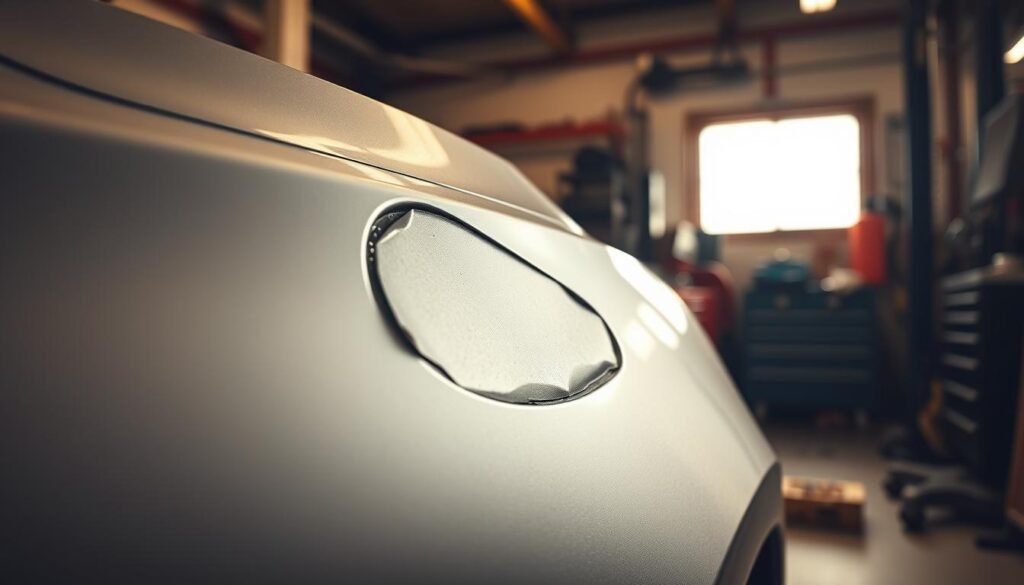
When to Skip Repairs
There are situations where it might not be worth fixing a car dent, such as when the vehicle is old or has multiple cosmetic issues. In these cases, the cost of repair may exceed the value added to the vehicle. Additionally, if the dent is minor and doesn’t affect the vehicle’s functionality or safety, it might be more practical to leave it unrepaired.
Prioritizing repairs is essential when working with a limited budget. Focus on fixing dents that are visible or could lead to more serious issues like rust or paint deterioration.
Preventing Future Dent Repair Expenses
Preventing future dent repair expenses requires a combination of smart practices and the right protective measures for your vehicle. By being proactive, you can minimize the risk of dents and maintain your car’s appearance without incurring significant repair costs.
Protective Parking Practices
Smart parking is one of the simplest ways to prevent dents. When parking in public lots, choose spots that are away from high-traffic areas to reduce the likelihood of door dings and other minor impacts. In tight spaces, consider using parking sensors or cameras to gauge distances accurately. Additionally, parking in a garage or covered area can protect your vehicle from hail damage and other environmental factors that might cause dents.
Protective Accessories and Films
There are various protective accessories available that can help prevent dent damage. Door edge guards, bumper protectors, and body side moldings can absorb minor impacts and protect your vehicle’s panels. Moreover, applying protective films or coatings to high-risk areas can provide an additional layer of protection against minor scratches and dents.
| Protective Measure | Description | Benefit |
|---|---|---|
| Door Edge Guards | Adhesive guards that cover door edges | Prevents door dings on adjacent vehicles |
| Bumper Protectors | Covers or films applied to bumpers | Protects against minor impacts |
| Body Side Moldings | Moldings that cover the sides of the vehicle | Guards against scratches and minor dents |
Immediate Actions After Minor Impacts
If your vehicle experiences a minor impact, taking immediate action can help prevent dent formation. Inspect the area carefully for any damage and consider using a dent repair kit or consulting a professional if necessary. Even if the damage seems minor, addressing it promptly can prevent further issues.
By adopting these strategies, you can significantly reduce the risk of dent damage and the associated repair expenses. Regular maintenance and protective measures can go a long way in preserving your vehicle’s condition.
Making Smart Decisions About Car Dent Repairs
Deciding how to approach car dent repairs requires careful consideration of several factors. To make an informed decision, you need to assess theseverity of the dent, thevalue of your vehicle, and yourbudget for repairs.
When evaluating dent repair options, consider thesize, location, and type of dent, as well as themethod of repair. For instance,Paintless Dent Repair (PDR)is a cost-effective and efficient method for minor dents, while more extensive damage may require traditional repair techniques.
To balance cost considerations with quality and long-term outcomes, it’s essential toget multiple estimates from reputable auto body shops. This will help you understand the average cost of repairs and identify any significant deviations from the norm. Additionally, consider your future plans for the vehicle; if you intend to keep it for an extended period, investing in high-quality repairs may be worthwhile.
When weighing DIY versus professional repair options, consider your level of expertise and the tools required for the job. While DIY repairs can be cost-effective, they may not always yield the desired results, especially for complex or large dents. In contrast, professional technicians use specialized tools and techniques to ensure a seamless repair.
Ultimately, making smart decisions about car dent repairs involves considering multiple factors and prioritizing your needs. By doing so, you can ensure that your vehicle is restored to its original condition while minimizing unnecessary expenses.
FAQ
What is paintless dent repair (PDR), and when is it used?
Paintless dent repair is a method used to remove minor dents and dings from your vehicle’s body without the need for painting. It’s typically used for small to medium-sized dents where the paint is still intact.
How do I know if my car’s dent can be fixed with PDR?
A professional technician will assess your vehicle’s dent to determine if PDR is suitable. They’ll check the dent’s size, location, and whether the paint is damaged.
What factors affect the cost of dent repair?
The cost of dent repair is influenced by the dent’s size and depth, its location on your vehicle, the extent of paint damage, your vehicle’s make and model, and the type of panel material (steel or aluminum).
Can I repair a dent on my own, or should I seek professional help?
While DIY dent repair kits are available, they can be risky and may not produce the desired results. For best outcomes, consider consulting a professional technician, especially for larger or more complex dents.
Will my insurance cover the cost of dent repair?
Insurance coverage for dent repair depends on your policy and the circumstances surrounding the damage. If the damage is due to an accident or hail, you may be covered; however, minor dents may not be worth filing a claim.
How long does the dent repair process typically take?
The time required for dent repair varies depending on the complexity of the job, the technician’s workload, and the repair method used. Simple PDR repairs can often be completed within a few hours.
Can dent repairs affect my vehicle’s resale value?
A well-executed dent repair can help maintain your vehicle’s resale value. Conversely, a poorly done repair can negatively impact its value.
Are there ways to prevent future dent repair expenses?
Yes, you can take steps to minimize the risk of dents, such as parking in safe locations, using protective accessories like car covers or door edge guards, and addressing minor impacts promptly.